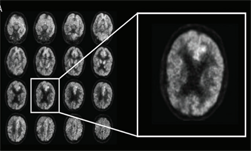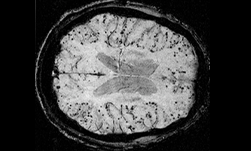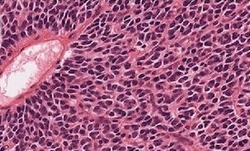A new study published in Radiology describes how deep learning can improve the ability of brain imaging to predict Alzheimer’s disease years before an actual diagnosis. The research has the potential to help millions of people and could be a useful tool for radiologists.
“If we diagnose Alzheimer’s disease when all the symptoms have manifested, the brain volume loss is so significant that it’s too late to intervene,” said study co-author Jae Ho Sohn, MD, from the Radiology & Biomedical Imaging Department at the University of California in San Francisco (UCSF). “If we can detect it earlier, that’s an opportunity for investigators to potentially find better ways to slow down or even halt the disease process.”
Using NVIDIA TITAN Xp GPUs with CUDA 9 and cuDNN 6, Sohn and his colleagues trained a convolutional neural network on the ImageNet dataset to detect certain changes in the human brain. The researchers then fine-tuned their network using additional data from the Alzheimer’s Disease Neuroimaging Initiative (ADNI) dataset.
According to Sohn, research has linked changes in a person’s metabolism, such as an increase in glucose in certain parts of the brain, with Alzheimer’s disease.
“Differences in the pattern of glucose uptake in the brain are very subtle and diffuse,” Sohn said. “People are good at finding specific biomarkers of disease, but metabolic changes represent a more global and subtle process.”

To validate their results, the team tested their convolutional neural network on an independent set of 40 imaging exams from 40 patients not seen during training. The neural network achieved a 100 percent sensitivity rate in detecting the disease six years before an actual diagnosis.
The researchers used images taken from Positron Emission Tomographyv (PET), which uses a small amount of radioactive materials and a special camera to evaluate organs and tissues.
“We were very pleased with the algorithm’s performance,” Dr. Sohn said. “It was able to predict every single case that advanced to Alzheimer’s disease.”
Even though the results are very impressive, the team cautioned that their validation set was small, meaning that a larger dataset is needed to fully evaluate the method.
The team hopes that the algorithm could one day be used as a tool that complements the work of radiologists.
Read more>
AI Study Predicts Alzheimer’s Six Years Before Diagnosis
Feb 12, 2019
Discuss (0)

Related resources
- DLI course: Modeling Time-Series Data with Recurrent Neural Networks in Keras
- DLI course: Applications of AI for Predictive Maintenance
- DLI course: Coarse-to-Fine Contextual Memory for Medical Imaging
- GTC session: How Artificial Intelligence is Powering the Future of Biomedicine
- GTC session: Live from GTC: A Conversation on the Latest in AI Research
- GTC session: Empower Large-Scale AI Workloads With Google Cloud AI Hypercomputer Supercomputing Architecture (Presented by Google Cloud)









